Research in Malaysia shows potential for red tilapia hybrid
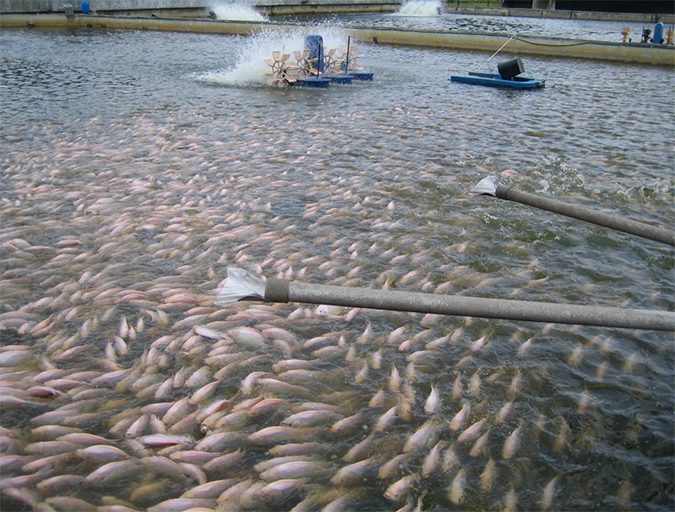
Disease is a major limiting factor to aquaculture expansion and productivity. Of particular concern to tilapia aquaculture are bacterial diseases caused by the Streptococcal groups, such as Streptococcus agalactiae, which can cause widespread mortalities, particularly in warm water and high intensive culture systems in various countries. Antibiotics such as oxytetracycline (OTC) are still being used as the most common treatment and/or prophylactic against bacterial diseases, including Streptococcus, in many sectors of the aquaculture industry. However, as the global trend in antibiotic use becomes more restricted and unpopular in the aquaculture industry, it will become increasingly important to identify suitable prophylactic and growth-promoting alternatives and among these, interest in organic acids is growing.
Organic acids are organic compounds considered as “Generally Regarded as Safe.” Various factors may influence the efficacy of organic acids, including the species, age, diet composition, type and concentrations of organic acids as well as the culture conditions. Several studies have reported the beneficial effect of organic acids in improving nutrient utilization, which has been largely attributed to the acidifying effects of the diets, thus making nutrients, particularly minerals, more available.
In previous studies, red hybrid tilapia, Oreochromis sp., fed dietary organic acids blends (OAB) showed a slight, but not significant, improvement in growth performance and phosphorus (P) utilization, as well as significantly improving their resistance to S. agalactiae infections. However, it was unclear whether tilapia growth performance can be further improved by higher dietary inclusion levels of organic acids in a dose-dependent manner. It is also currently not known whether the gains in growth, feed efficiency, and antimicrobial effects observed in tilapia fed organic acids-added diets are as efficacious as antibiotics commonly used in the aquaculture industry for such purposes.
The study reported here compared the effects of dietary OAB and OTC supplementations on the growth performance, feeding efficiency, nutrient digestibility, mineral availability, gastrointestinal pH, total viable bacterial counts within the gut and faeces of red hybrid tilapia, Oreochromis sp., as well as their resistance to S. agalactiae challenge. This article summarizes the original publication in Aquaculture Research, 2016, 47, 357–369.
Study setup
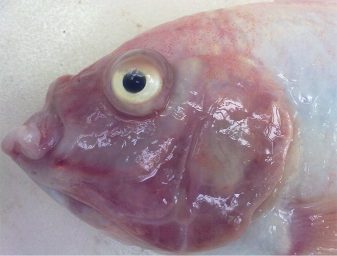
The experimental diets used in the study included four isonitrogenous and isolipidic practical diets. Soybean meal was the major dietary protein source, contributing 800 g/kg of the total crude protein in the experimental diets, with 200 g/kg from Danish fish meal. Apart from the proprietary OAB (Universiti Sains Malaysia) and OTC additives, the ingredient composition of all diets was similar to each other. The experimental diets were designated as 0.5 percent OTC, 0.5 percent OAB, 1.0 percent OAB and a control diet (no added antibiotics or organic acids). The 0.5 percent OTC or 0.5 percent OAB diet were incorporated with 5 g/kg OTC or OAB, respectively, while the 1.0 percent OAB diet had 10 g/kg of OAB. A dietary level of 5 g/kg OTC was chosen as a positive control to investigate the prophylactic use of OTC both as an antibiotic growth promoter as well as an antimicrobial for tilapia when administered on a long term basis. The diets were prepared according to Ng et al. (2009) and dried diets were crumbled into pellets of an appropriate size and stored in airtight polyethylene bags at -20°C until required.
The experimental fish used were red hybrid tilapia (Oreochromis sp.) fingerlings from a local fish farm in Penang, Malaysia. Upon arrival at the university campus, the fish were stocked in a 1000 L round-shaped fiberglass tank housed in a roofed open-sided hatchery. The fish were acclimated for two weeks, then starved for 24 h, and 20 fingerlings (initial mean weight = 9.45 ± 0.01 g) were randomly distributed into each of twelve 500 L round-shaped fiberglass tanks, each connected to a flow-through water system. Fish were hand-fed to apparent satiation twice daily and each experimental diet was fed to triplicate groups of fish. Each week all fish were batch-weighed to monitor growth performance and the feeding trial was conducted for 20 weeks.
Faecal samples were collected after 6 weeks into the feeding trial, and two weeks prior to final sampling. These samples were pooled and processed for analysis. At the end of the 20 week feeding trial, all fish were individually weighed and measured for total length. A total of 12 fish per treatment were then randomly removed from each tank, euthanized, dissected and measured for their haematocrit percentage, hepatosomatic index (HSI), viscero-somatic index (VSI), intraperitoneal fat index (IPF) and pH of the stomach and gut contents as previously described in Ng et al. (2009). A further 9–12 fish per treatment were euthanized and used to measure the total cultivable bacterial counts in the gut as described in Ng et al. (2009).
For detailed procedures on the experimental setup – including chemical analysis, digestibility calculations, bacterial challenge tests and statistical analyses – refer to the original publication.
Results
Tilapia fed the 0.5 percent OTC diet had significantly higher final weight (P = 0.026) and weight gain (P = 0.027) than those fed the control diet, but not significantly different from tilapia fed the OAB diets (P > 0.05). No significant differences were detected for feed conversion ratio and protein efficiency ratio or the biological indices of HSI, VSI, IPF, haematocrit or condition factor among all the dietary treatments (P > 0.05). Tilapia survival was high (95–100 percent) and was significantly higher (P = 0.003) for fish fed the 0.5 percent OTC or 1.0 percent OAB diet compared to the control diet.
Supplementation of the experimental diets with 0.5 percent or 1.0 percent OAB lowered the diet pH from 5.88 to 5.64 and 5.40 respectively. OTC supplementation did not affect diet pH. While the pH of the stomach contents was not significantly affected by the diets (P > 0.05), the pH of the gut contents of tilapia fed either the 0.5 percent or 1.0 percent OAB diet was significantly lower compared to those fed the 0.5 percent OTC or the control diet (P = 0.006). Increasing dietary OAB inclusion from 0.5 percent to 1.0 percent further lowered the pH of the gut contents but not significantly.
Digestibility of dry matter was significantly higher (P = 0.044) for diets supplemented with 0.5 percent OTC or 1.0 percent OAB compared with the control diet, while no significant difference was detected between the 0.5 percent OAB diet and other diets. The highest ash digestibility coefficient of about 0.29 was recorded for the 0.5 percent OTC and 1.0 percent OAB diet, which was significantly higher than the control diet (P = 0.034). Apparent protein digestibility coefficient varied from 0.86 to 0.88, with no significant differences among the diets although the OTC and OAB treatments tended to have higher protein digestibility values than the control treatment.
The vertebral column (backbone) of tilapia contained a significantly higher (P < 0.001) OTC concentration (33.17 mg/kg) than all other tissues. The lowest OTC content was detected in the muscle (0.38 mg/kg) and was significantly lower than either the liver or skin with scales.
Visual examination showed that tilapia fed the OTC diet had an apparent fluorescent yellow pigmentation of the scales, fin rays and operculum, which increased over time, as well as darkened blotches around the operculum. OTC residues were not detected in any of the tissues of fish fed the control or OAB diets.
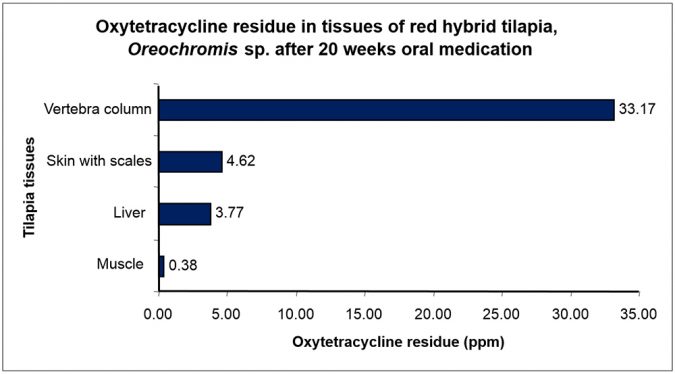
Dietary supplementation of OAB significantly decreased (P = 0.020) the total viable bacterial count in the expelled faeces of tilapia compared to the control. The highest total CFU/g of faeces was detected from fish fed the control diet which was significantly higher than the bacterial count in faeces collected from fish fed either the 0.5 percent or 1.0 percent OAB diets. The viable bacterial count in the faeces of tilapia fed the 0.5 percent OTC diet was not significantly different than all other treatments (P > 0.05). After 20 weeks, fish fed either 0.5 percent or 1.0 percent OAB diet had a significantly lower (P = 0.014) total viable bacteria in the gut compared with the fish fed either the 0.5 percent OTC or control diet. Fish fed the 1.0 percent OAB diet had the lowest bacterial population (1.03 x 104 CFU/g), which was 68.5 percent lower than that of fish fed the control diet (3.27 x 104 CFU/g). Increasing dietary levels of OAB led to a reduced gut population of viable bacteria but no significant differences were evident (P > 0.05). After the 22-day S. agalactiae challenge, tilapia fed the 0.5 percent or 1.0 percent OAB diet had significantly less (P = 0.027) gut bacterial population than those fed the control diet. Meanwhile, tilapia fed the 1.0 percent OAB diet had significantly lower gut bacterial populations than those fed the 0.5 percent OTC diet.
Fish mortalities caused by S. agalactiae infection started 2 days after exposure. During the 22-day disease challenge period, infected fish developed overt clinical signs of S. agalactiae infection such as erratic swimming, unilateral or bilateral exophthalmia, corneal opacity, lethargy, loss of appetite, and haemorrhages particularly around the eyes, operculum, base of the fins and the edge of the tail fin. Inoculums taken from the brain, eyes and kidney tissues of dead fish were cultured positive for beta-haemolytic Streptococcus, thereby confirming the cause of death. No streptococcal bacteria were isolated from the tissues of healthy surviving fish at the end of the disease challenge trial. The total number of surviving tilapia fed the control diet was significantly lower (P = 0.015) than those fed the 0.5 percent OAB or 0.5 percent OTC diet, which had the same number of surviving fish after 22 days of exposure to S. agalactiae. For tilapia fed the 1.0 percent OAB diet, no significant differences were detected when compared among all the dietary treatments.
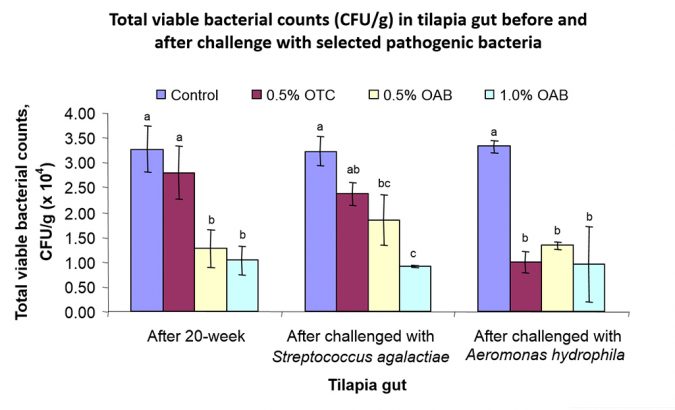
Perspectives
The positive benefits of dietary organic acids observed in the present study could be due in part to the fact that a combination of different organic acids was used. Each organic acid has its own spectrum of antibacterial activity, and it is generally known that one type of organic acid is not completely effective against all disease causing micro-organisms. Combinations of organic
acids are typically believed to be more effective against pathogenic bacteria compared to their single acids, and can have synergistic effects. We were able to maximize the antimicrobial effect of the OAB used in the present study by combining different organic acids based on data from various initial in vitro studies on their antimicrobial efficacy against various fish pathogens (unpublished data).
In the present study, the beneficial impact of dietary organic acids equaled or surpassed that of OTC, both as an antimicrobial and in its ability to improve nutrient utilization and growth performance of tilapia. This is particularly promising considering the current trend of increasing emphasis on food safety and traceability in aquaculture production leading to the reduction or ban in antibiotic use. The significant reduction in faecal bacterial counts as well as an improvement in dietary P utilization for tilapia fed the OAB diets may impart additional benefits by mitigating their excessive discharge to the environment. Organic acids have the potential to become a useful feed additive in tilapia feeds to improve fish health and productivity in an environmentally friendly way.
Now that you've reached the end of the article ...
… please consider supporting GSA’s mission to advance responsible seafood practices through education, advocacy and third-party assurances. The Advocate aims to document the evolution of responsible seafood practices and share the expansive knowledge of our vast network of contributors.
By becoming a Global Seafood Alliance member, you’re ensuring that all of the pre-competitive work we do through member benefits, resources and events can continue. Individual membership costs just $50 a year.
Not a GSA member? Join us.
Authors
-

Chik-Boon Koh, Ph.D.
Fish Nutrition Laboratory
School of Biological Sciences
Universiti Sains Malaysia
Penang 11800, Malaysia -
Nicholas Romano, Ph.D.
Fish Nutrition Laboratory
School of Biological Sciences
Universiti Sains Malaysia
Penang 11800, Malaysia -
Abdullah Siti Zahrah, Ph.D.
National Fish Health Research Centre
Batu Maung
Penang, Malaysia
-
Wing-Keong Ng, Ph.D.
Fish Nutrition Laboratory
School of Biological Sciences
Universiti Sains Malaysia
Penang 11800, Malaysia
[121,109,46,109,115,117,64,103,110,107,119]
Tagged With
Related Posts
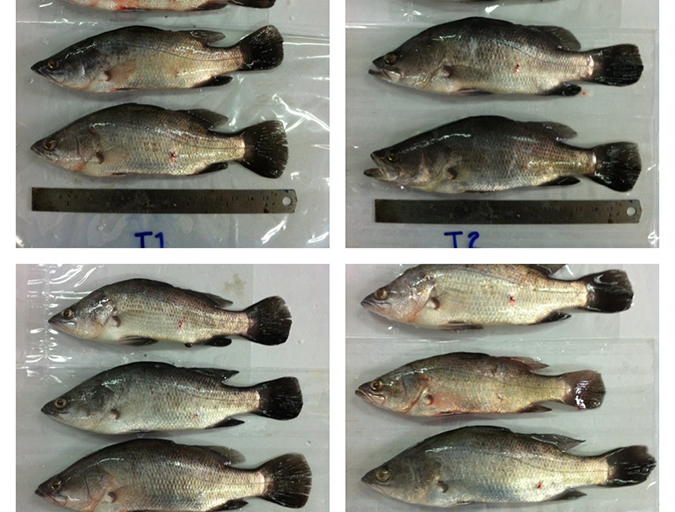
Aquafeeds
Improving productivity, efficiency in Asian sea bass aquaculture
The effects of the dietary acidifier and feed additive potassium diformate (KDF) were tested in diets of juvenile Asian seabass (Lates calcarifer) in Thailand. Results show that including KDF at 0.5 percent in the diets can help improve growth, survival and therefore overall production of this species.
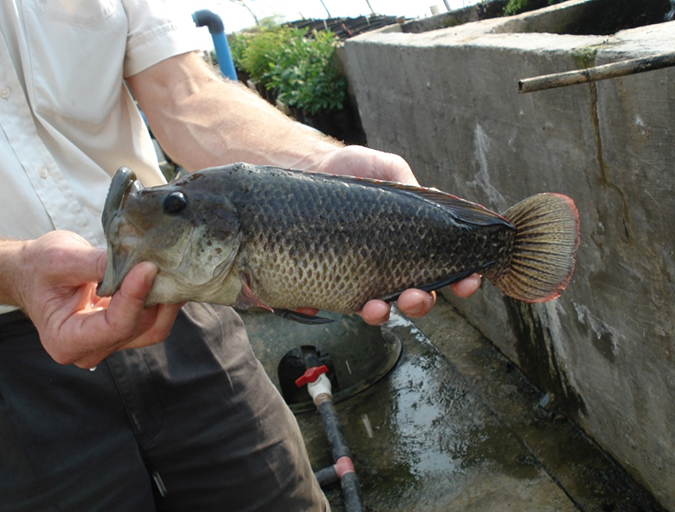
Aquafeeds
Biofloc systems viable for tilapia production
Well-designed and managed biofloc technology systems are a viable alternative for production of various species like tilapia, to increase feed efficiency by lowering aquafeed protein requirements and to help reduce or eliminate effluent discharges.
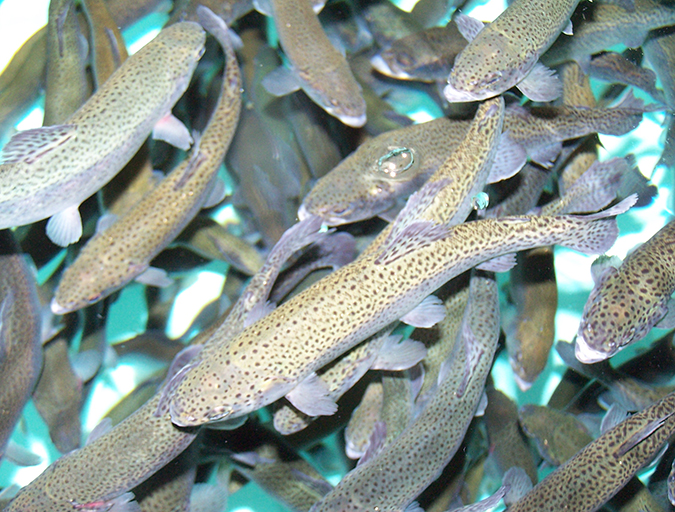
Aquafeeds
Farmed fish nutrition the focus of ISFNF 2016
At the biannual International Symposium on Fish Nutrition and Feeding in Idaho, experts from around the world will discuss fish nutrition and health, feed research, cellular nutrition, nutritional modeling, nutrigenomics and effective feeds for quality consumer products.
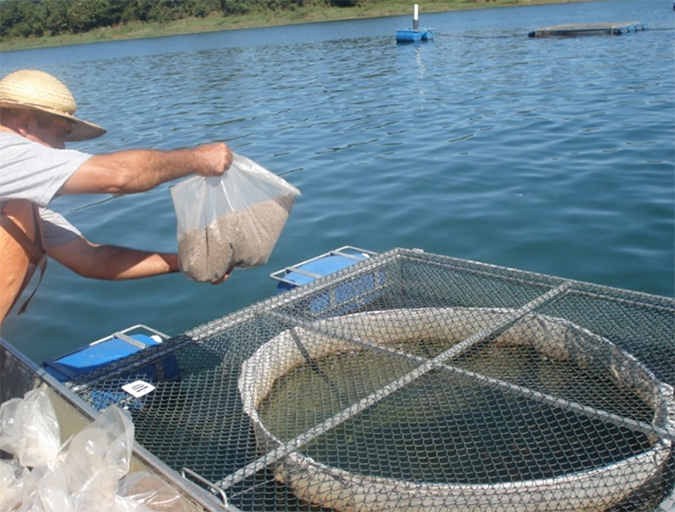
Health & Welfare
Aiding gut health with a natural growth promotor
A study with Nile tilapia conducted in commercial production cages in Brazil showed the potential – in the absence of major disease threats – of a commercial, natural growth promotor that modulates the microbiota (inhibiting growth of pathogenic bacteria and promoting growth of beneficial bacteria) and inhibits quorum sensing.



